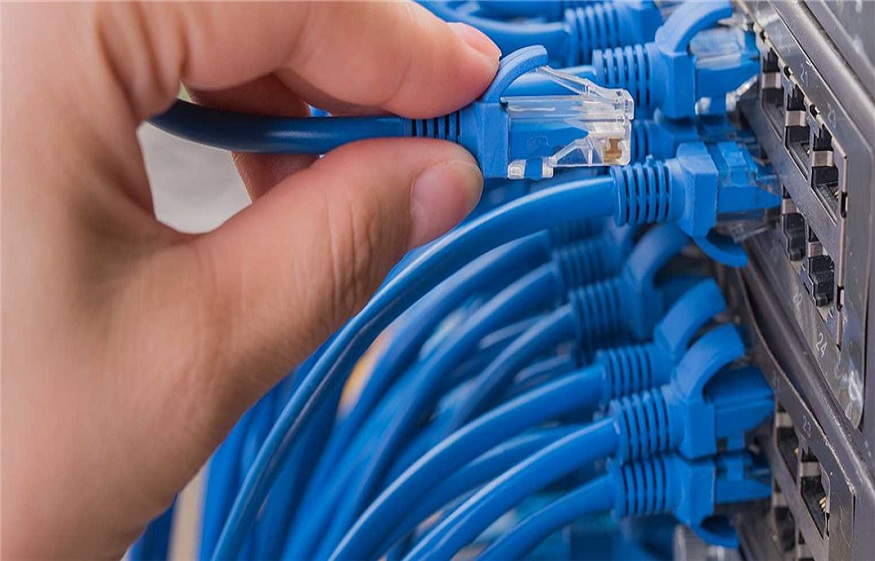Twisted pair cables have two insulation conductors. Alexander Graham Bell is the one who invented it. It is made up of two conductors, usually copper, each with its plastic insulation. Twisted pair cables derive their name from how these two conductors have twisted around.
The typical copper cable known as twisted pair is used to link residential and commercial computers to a phone carrier. STP stands for shielded twisted pair (STP). On the other hand, unshielded twisted pair (UTP) is the typical type of wire for the home.
Where Should It Be Applied?
Twisted pair cabling is now installed in homes in two pairs, allowing you to add Cat5e Plenum Cable if necessary. Each has a different color code if it is packaged in many pairs. Several pair multiples are needed for various usages, including analog, digital, or Ethernet.
Twisted pair is often used for homes, but because it is less costly than coaxial cable, better quality twisted pair is regularly used for horizontal wiring in LAN setups.
Twisted pair cables have a variety of uses, including providing voice and data channels on the phone line.
- The DSL lines use these twisted pair cables.
- Twisted pair cables are often used in local area networks (LAN).
- Both analog and digital communication can be done using them.
- Twisted pair cables are often used in applications such as RJ-45.
How Does It Work?
The signal is carried using one of the cables, and the other is solely used as a feedback signal. The receiver uses the difference in transmissions between these two cables. Due to the feature of twisted pair cables, the noise or crosstalk that occurs between the two parallel conductors is significantly decreased.
One conductor is close to the noise, and the second is away from it; nevertheless, the noise is considerably lowered, preserving the balance of the signal quality and ensuring that the receiver only receives minimal or no noise. In twisted pair cables, the frequency of twists per unit length of cable has a significant impact on the transmission strength.
Types Of Twisted Pair Cables:
Twisted Pair Cables are further of two types:
1.Unshielded Twisted Pair Cables (UTP):
Unshielded twisted pair cables are made up of two insulated copper cables that have been twisted together without requiring additional insulation or shielding. According to the insulation’s position, they lessen interruption. Twisted pair wires that are unshielded are structured in pairs, so we can add a new link as needed. For example, our homes have one extra pair of telephone or DSL lines. Depending on the situation, a Cat6 Plenum Cable is used in various ways.
Advantages:
- The tiny size of these cables makes them affordable and simple to install.
- They are typically employed to transmit speech and data over short distances.
- It is less expensive than other kinds of cables.
Disadvantages:
UTP connections are not secure connections. The speed of the cable is limited.
2.Shielded Twisted Pair Cables (STP):
These cables have additional insulation or a protected copper braid coating over the conductors. The going of the wire is strengthened by its covering. Additionally, it lessens cable noise and signal interference. Similar to UTP cables, STP cables are similarly color-coded since analog and digital transmission call for separate color pairs. However, these wires are expensive and challenging to install.
Advantages:
- They are placed underground and typically used for long-distance communication and data transmission.
- The shields form a barrier to keep outside magnetic noise from entering the cable.
- They have more bandwidth than UTP does.
Disadvantages:
- These cables cost a lot of money.
- They must only be put in beneath.
General Properties Of Twisted Pair:
- The thicker the wire, the less the resistance, the stronger the signal over a given distance, and the better the performance of the medium.
- The effective capacity of a twisted pair cable depends on several factors, including the length of the circuit.
- As bandwidth increases, the carrier frequency increases, and attenuation becomes more of an issue.
- When the wires are twisted, the waves from different twists cancel out, so the wire radiates less effectively.
- Its performance has increased its application including the, inside wire and cable and terminal-to-LAN.
Conclusion:
Two insulated copper wires are wound around each other to lessen magnetic waves or interference between sets of wires. A twisted pair connection needs both cables for each link. , each typically constructed of copper.
Twisted pair is occasionally put in two or more couples, all within a single wire, as some phones or desktop locations require several connections. The twisted pair is encased in a shield that serves as a ground in some commercial places.

